HP Stream - 11-y012nf User guide
- Category
- Notebooks
- Type
- User guide

Maintenance and Service Guide
HP Stream Laptop PC
HP Stream 11 Pro G5 Notebook PC
HP Stream 11 Pro G4 Notebook PC Education Edition
HP Stream 11 Pro G3 Notebook PC
IMPORTANT! This document is intended for HP authorized service
providers only.

© Copyright 2018 HP Development Company,
L.P.
AMD is a trademark of Advanced Micro Devices,
Inc. Bluetooth is a trademark owned by its
proprietor and used by HP Inc. under license.
Intel, Celeron, Pentium, and Thunderbolt are
trademarks of Intel Corporation in the U.S. and
other countries. Windows is either a registered
trademark or trademark of Microsoft
Corporation in the United States and/or other
countries.
The information contained herein is subject to
change without notice. The only warranties for
HP products and services are set forth in
the express warranty statements
accompanying such products and services.
Nothing herein should be construed as
constituting an additional warranty. HP shall
not be liable for technical or editorial errors or
omissions contained herein.
Fifth Edition: December 2018
Fourth Edition: May 2018
First Edition: October 2016
Document Part Number: 902298-005
Product notice
This guide describes features that are common
to most models. Some features may not be
available on your computer.
Not all features are available in all editions or
versions of Windows. Systems may require
upgraded and/or separately purchased
hardware, drivers, software or BIOS update to
take full advantage of Windows functionality.
Windows 10 is automatically updated, which is
always enabled. ISP fees may apply and
additional requirements may apply over time
for updates. Go to http://www.microsoft.com
for details.
To access the latest user guides, go to
http://www.hp.com/support, and follow the
instructions to nd your product. Then select
User Guides.
Software terms
By installing, copying, downloading, or
otherwise using any software product
preinstalled on this computer, you agree to be
bound by the terms of the HP End User License
Agreement (EULA). If you do not accept these
license terms, your sole remedy is to return the
entire unused product (hardware and software)
within 14 days for a full refund subject to the
refund policy of your seller.
For any further information or to request a full
refund of the price of the computer, please
contact your seller.

Safety warning notice
WARNING! To reduce the possibility of heat-related injuries or of overheating the device, do not place
the device directly on your lap or obstruct the device air vents. Use the device only on a hard, at surface. Do
not allow another hard surface, such as an adjoining optional printer, or a soft surface, such as pillows or rugs
or clothing, to block airow. Also, do not allow the AC adapter to contact the skin or a soft surface, such as
pillows or rugs or clothing, during operation. The device and the AC adapter comply with the user-accessible
surface temperature limits dened by the International Standard for Safety of Information Technology
Equipment (IEC 60950-1).
iii

iv Safety warning notice

Table of contents
1 Product description ....................................................................................................................................... 1
2 Getting to know your computer ...................................................................................................................... 5
Right side ............................................................................................................................................................... 5
Left side ................................................................................................................................................................. 6
Display .................................................................................................................................................................... 7
Keyboard area ........................................................................................................................................................ 8
TouchPad ............................................................................................................................................. 8
Lights ................................................................................................................................................... 9
Button and speakers ......................................................................................................................... 10
Special keys ....................................................................................................................................... 11
Action keys ........................................................................................................................................ 12
Labels ................................................................................................................................................................... 13
3 Illustrated parts catalog .............................................................................................................................. 15
Computer major components .............................................................................................................................. 15
Display assembly subcomponents ...................................................................................................................... 18
Miscellaneous parts ............................................................................................................................................. 20
4 Removal and replacement procedures preliminary requirements .................................................................... 22
Tools required ...................................................................................................................................................... 22
Service considerations ......................................................................................................................................... 22
Plastic parts ....................................................................................................................................... 22
Cables and connectors ...................................................................................................................... 22
Drive handling ................................................................................................................................... 23
Workstation guidelines ..................................................................................................................... 23
Equipment guidelines ....................................................................................................................... 23
Electrostatic discharge damage .......................................................................................................................... 24
Packaging and transporting guidelines .............................................................................................................. 25
5 Removal and replacement procedures for authorized service provider parts .................................................... 26
Component replacement procedures .................................................................................................................. 26
Preparation for disassembly ............................................................................................................. 26
Computer feet ................................................................................................................................... 26
Keyboard/top cover ........................................................................................................................... 28
Speakers ............................................................................................................................................ 31
v

RTC battery (select products only) .................................................................................................... 33
Battery ............................................................................................................................................... 34
WLAN module .................................................................................................................................... 35
Heat sink ............................................................................................................................................ 37
System board .................................................................................................................................... 39
Connector board ................................................................................................................................ 42
Power connector ............................................................................................................................... 43
Power button board .......................................................................................................................... 44
TouchPad board ................................................................................................................................. 45
Display assembly ............................................................................................................................... 47
Base enclosure .................................................................................................................................. 52
6 Using Setup Utility (BIOS) ............................................................................................................................. 53
Starting Setup Utility (BIOS) ................................................................................................................................ 53
Updating Setup Utility (BIOS) .............................................................................................................................. 53
Determining the BIOS version ........................................................................................................... 53
Downloading a BIOS update .............................................................................................................. 54
7 Using HP PC Hardware Diagnostics ................................................................................................................ 55
Using HP PC Hardware Diagnostics Windows (select products only) ................................................................. 55
Downloading HP PC Hardware Diagnostics Windows ....................................................................... 55
Downloading the latest HP PC Hardware Diagnostics Windows version ....................... 56
Downloading HP Hardware Diagnostics Windows by product name or number
(select products only) ..................................................................................................... 56
Installing HP PC Hardware Diagnostics Windows ............................................................................. 56
Using HP PC Hardware Diagnostics UEFI ............................................................................................................. 56
Starting HP PC Hardware Diagnostics UEFI ....................................................................................... 57
Downloading HP PC Hardware Diagnostics UEFI to a USB ash drive .............................................. 57
Downloading the latest HP PC Hardware Diagnostics UEFI version .............................. 57
Downloading HP PC Hardware Diagnostics UEFI by product name or number
(select products only) ..................................................................................................... 57
Using Remote HP PC Hardware Diagnostics UEFI settings (select products only) ............................................. 58
Downloading Remote HP PC Hardware Diagnostics UEFI ................................................................. 58
Downloading the latest Remote HP PC Hardware Diagnostics UEFI version ................. 58
Downloading Remote HP PC Hardware Diagnostics UEFI by product name or
number ............................................................................................................................ 58
Customizing Remote HP PC Hardware Diagnostics UEFI settings .................................................... 58
8 Specications .............................................................................................................................................. 60
vi

9 Backing up, restoring, and recovering ........................................................................................................... 61
Backing up information and creating recovery media ........................................................................................ 61
Using Windows tools ......................................................................................................................... 61
Using the HP Cloud Recovery Download Tool to create recovery media (select products only) ..... 61
Restoring and recovery ........................................................................................................................................ 62
Restoring, resetting, and refreshing using Windows tools .............................................................. 62
Recovering using HP Recovery media ............................................................................................... 62
Changing the computer boot order ................................................................................................... 62
10 Power cord set requirements ...................................................................................................................... 63
Requirements for all countries ............................................................................................................................ 63
Requirements for specic countries and regions ................................................................................................ 64
11 Recycling .................................................................................................................................................. 66
Index ............................................................................................................................................................. 67
vii

viii

1 Product description
Category Details Stream 11
Pro G5
Stream 11 Pro
G4 Education
Stream 11
Pro G3
Stream
Product Name HP Stream Laptop PC √
HP Stream 11 Pro G5 Notebook PC √
HP Stream 11 Pro G4 Education Edition Notebook PC √
HP Stream 11 Pro G3 Notebook PC √
Processor Intel® Pentium Silver N5000 (1.1 GHZ turbo up to 2.7
GHz) 2400 MHz/4 MB L2, quad core, SDP, 4.8 W
√
Intel Celeron™ N4100 (1.1 GHz turbo up to 2.4 GHz)
2400 MHz/4 MB L2, quad core, SDP, 4.8 W
√
Intel Celeron N4000 (1.1 GHZ turbo up to 2.6 GHz)
2400 MHz/4 MB L2, dual core, SDP 4.8 W
√ √
Intel Celeron N3450 1.1 GHz (turbo up to 2.2 GHz)
dual core processor, (1866 MHz FSB, 2 MB L2 cache,
dual core, SDP, 4 W)
√
Intel Celeron N3350 1.1 GHz (turbo up to 2.4 GHz)
dual core processor, (1866 MHz FSB, 2 MB L2 cache,
dual core, SDP, 4 W)
√
Intel Celeron N3060 1.66 GHz (turbo up to 2.48 GHz)
dual core (1600 MHz FSB, 2 MB L2 cache, dual core,
SDP, 4 W)
√ √
Intel Celeron N3050 1.66 GHz (turbo up to 2.16 GHz)
dual core (1600 MHz FSB, 2 MB L2 cache, dual core,
SDP, 4 W)
√
Chipset Intel integrated soldered-on-circuit (SoC) √ √ √ √
Graphics Internal Graphics
Intel UHD Graphics 605 (N5000) √
Intel UHD Graphics 600 (N4100, N4000) √ √
Intel HD Graphics 400 (N3450, N3350, N3060,
N3050)
√ √ √
Supports HD decode, DX11, and HDMI √ √ √ √
Panel 11.6 in, high-denition (HD)(1366 × 768), white
light-emitting diode (WLED), 16:9 aspect ratio;
typical brightness: 220 nits
AntiGlare, slim, SVA, at (3.0 mm); eDP; touch on
panel (TOP), multitouch enabled
√
AntiGlare, slim, SVA, at (3.0 mm); eDP; non-touch √ √ √ √
BrightView, slim, UWVA, at (1.2 mm); touch on panel
(TOP)
√ √
1

Category Details Stream 11
Pro G5
Stream 11 Pro
G4 Education
Stream 11
Pro G3
Stream
Memory Supports DDR4-2400 single channel support on-
board 4 GB system memory
√ √
Supports DDR3L-1600 single channel on-board 2 GB
system memory
√ √ √
Supports DDR3L-1600 dual channel on-board 4 GB
system memory
√ √ √
Storage Embedded MultiMedia Controller (eMMC) congurations
32 GB √ √ √
64 GB √ √ √ √
128 GB √ √
Audio and
video
HP VGA camera, USB 2.0 xed (no tilt) integrated
activity light, 640 × 480 by 24 frames per second,
camera with rubber for non-touch
√ √ √ √
Single digital microphone with appropriate beam-
forming, echo-cancellation, noise-suppression
software
√ √ √ √
Two speakers √ √ √ √
HP Noise Cancellation √ √ √ √
Wireless Integrated wireless local area network (WLAN)
options by way of wireless module
√ √ √ √
Two built-in WLAN antennas √ √ √ √
Intel Dual Band Wireless-AC 9560 802.11ac 2 × 2 WiFi
+ Bluetooth 5.0 Combo Adapter (MU-MIMO/160Mhz)
√
Intel Dual Band AC 7265 802.11ac 2 × 2 WiFi +
Bluetooth 4.2 Combo Adapter (non-vPro)
√ √ √
Realtek RTL8822BE 802.11ac 2 × 2 WiFi + Bluetooth
4.2 Combo Adapter (MU-MIMO supported)
√
Ports HP Smart Plug AC adapter √ √ √ √
Headphone/microphone combo jack √ √ √ √
High-denition multimedia interface (HDMI) v.1.4b,
supporting up to 1080b, 1920 × 1080 at 60 Hz
√ √ √ √
USB 3.0 port √ √ √ √
USB 2.0 port √ √ √ √
External
media cards
Micro Secure Digital (SD) Media Reader √ √ √ √
Supports SD/SDHC/SDXC √ √ √ √
Push-push insertion/removal √ √ √ √
Keyboard/
pointing
devices
Keyboard
Full-sized, textured, island-style, keyboard √ √ √ √
TouchPad requirements
2 Chapter 1 Product description

Category Details Stream 11
Pro G5
Stream 11 Pro
G4 Education
Stream 11
Pro G3
Stream
ClickPad with image sensor √ √ √ √
Multitouch gestures enabled (2-nger scroll, pinch,
rotate, 2-nger click, 3-nger ic)
√ √ √ √
Support for modern trackpad gestures √ √ √ √
Taps enabled as default √ √ √ √
Power
requirements
Battery
Supports a 2-cell, 37.69 Whr, polymer battery √ √ √ √
AC adapter
Supports 65 W HP Smart AC adapter (non-PFC, EM,
4.5 mm)(Pro G5 models)
√
Supports 45 W HP Smart AC adapter (non-PFC, RC,
4.5 mm)
√ √ √ √
Power cord
1 m conventional power cord (C5) √ √ √ √
Security Trusted platform module (TPM) 2.0 √ √ √ √
Kensington Mini Security Lock √ √ √ √
Operating
system
Preinstalled:
Windows 10 Home 64 √
Windows 10 Home 64 Compact √ √
Windows 10 Home 64 Single Language √
Windows 10 Home 64 Single Language APAC EM PPP √
Windows 10 Home 64 StF MSNA for High Education √
Windows 10 Home 64 StF MSNA for High Education
Strategic
√
Windows 10 Home Entry Indonesia PPP √
Windows 10 Home Value Indonesia PPP √
Windows 10 Home Entry APAC PPP √
Windows 10 Home Value APAC PPP √
Windows 10 Home in S Mode (Entry) √
Windows 10 Home in S Mode (Value) √
Windows 10 Home in S Mode (Entry) MS Signature √
Windows 10 Home Entry NB √
Windows 10 Home Value NB √
Windows 10 Home Entry NB with OneDrive √
SEAP Windows 10 Home Entry NB √
3

Category Details Stream 11
Pro G5
Stream 11 Pro
G4 Education
Stream 11
Pro G3
Stream
SEAP Windows 10 Home Entry NB with OneDrive √
Windows 10 Pro 64 Compact √ √
Windows 10 Pro 64 StF MSNA √
Windows 10 Pro 64 StF MSNA Emerging Market √
Windows 10 Pro 64 StF MSNA Strategic √
Windows 10 Pro 64 Value Notebook √
Windows 10 Pro S 64 √
Windows 10 Pro S 64 Value √ √
Windows 10 Pro 64 StF MSNA Compact √ √
Windows 10 Pro 64 StF MSNA EM Compact √ √
Windows 10 Pro 64 StF MSNA Strategic Compact √ √
Windows 10 Pro 64 Value Notebook Compact √ √
Windows 10 S 64 Value Compact √
Win 10 Pro S 64 Compact √
Win 10 Pro S 64 StF MSNA √
Win 10 Pro S 64 StF MSNA EM √
Win 10 Pro S 64 StF MSNA Strategic √
Win 10 Pro S 64 Value Compact √
Web Support
Microsoft WHQL √ √ √
Windows 10 USB System Recovery Kit (OSDRU) √ √ √
Windows 10 Enterprise 64 √ √
Windows 10 Pro CBB 1803 √
Serviceability End-user replaceable part:
AC adapter √ √ √ √
4 Chapter 1 Product description

2 Getting to know your computer
Your computer features top-rated components. This chapter provides details about your components, where
they are located, and how they work.
Right side
Component Description
(1) HDMI port Connects an optional video or audio device, such as a high-
denition television, any compatible digital or audio component,
or a high-speed High-Denition Multimedia Interface (HDMI)
device.
(2) USB SuperSpeed port Connects a USB device, such as a cell phone, camera, activity
tracker, or smartwatch, and provides high-speed data transfer.
(3) MicroSD memory card reader Reads optional memory cards that enable you to store, manage,
share, or access information.
To insert a card:
1. Hold the card label-side up, with connectors facing the
computer.
2. Insert the card into the memory card reader, and then
press in on the card until it is rmly seated.
To remove a card:
▲ Press in on the card, and then remove it from the memory
card reader.
(4) AC adapter and battery light
●
White: The AC adapter is connected and the battery is fully
charged.
●
Blinking white: The AC adapter is disconnected and the
battery has reached a low battery level.
●
Amber: The AC adapter is connected and the battery is
charging.
●
O: The battery is not charging.
(5) Power connector Connects an AC adapter.
Right side 5

Left side
Component Description
(1) Security cable slot Attaches an optional security cable to the computer.
NOTE: The security cable is designed to act as a deterrent, but
it may not prevent the computer from being mishandled or
stolen.
(2) USB port Connects a USB device, such as a cell phone, camera, activity
tracker, or smartwatch, and provides data transfer.
(3) Audio-out (headphone)/Audio-in (microphone)
combo jack
Connects optional powered stereo speakers, headphones,
earbuds, a headset, or a television audio cable. Also connects an
optional headset microphone. This jack does not support
optional standalone microphones.
WARNING! To reduce the risk of personal injury, adjust the
volume before putting on headphones, earbuds, or a headset.
For additional safety information, see the Regulatory, Safety,
and Environmental Notices.
To access this guide:
▲ Select the Start button, select HP Help and Support, and
then select HP Documentation.
NOTE: When a device is connected to the jack, the computer
speakers are disabled.
(4) Power light
●
On: The computer is on.
●
Blinking: The computer is in the Sleep state, a power-
saving state. The computer shuts o power to the display
and other unneeded components.
●
O: The computer is o or in Hibernation. Hibernation is a
power-saving state that uses the least amount of power.
6 Chapter 2 Getting to know your computer

Display
Component Description
(1) WLAN antennas* (select products only) Send and receive wireless signals to communicate with wireless local
area networks (WLANs).
(2) Camera light On: The camera is in use.
(3) Camera Allows you to video chat, record video, and record still images. Some
cameras also allow a facial recognition logon to Windows, instead of
a password logon.
NOTE: Camera functions vary depending on the camera hardware
and software installed on your product.
(4) Internal microphone Records sound.
*The antennas are not visible from the outside of the computer. For optimal transmission, keep the areas immediately around the
antennas free from obstructions.
For wireless regulatory notices, see the section of the Regulatory, Safety, and Environmental Notices that applies to your country or
region.
To access this guide:
▲ Select the Start button, select HP Help and Support, and then select HP Documentation.
Display 7

Keyboard area
TouchPad
Component Description
(1) TouchPad zone Reads your nger gestures to move the pointer or activate items
on the screen.
(2) Left control zone Textured area that allows you to perform additional gestures.
(3) Right control zone Textured area that allows you to perform additional gestures.
8 Chapter 2 Getting to know your computer

Lights
Component Description
(1) Caps lock light On: Caps lock is on, which switches the key input to all capital
letters.
(2) Mute light
●
On: Computer sound is o.
●
O: Computer sound is on.
Keyboard area 9

Button and speakers
Component Description
(1) Power button
●
When the computer is o, press the button to turn on the
computer.
●
When the computer is on, press the button briey to
initiate Sleep.
●
When the computer is in the Sleep state, press the button
briey to exit Sleep (select products only).
●
When the computer is in Hibernation, press the button
briey to exit Hibernation.
CAUTION: Pressing and holding down the power button results
in the loss of unsaved information.
If the computer has stopped responding and shutdown
procedures are ineective, press and hold the power button
down for at least 5 seconds to turn o the computer.
To learn more about your power settings, see your power
options:
▲
Right-click the Power icon , and then select Power
Options.
(2) Speakers (2) Produce sound.
10 Chapter 2 Getting to know your computer

Special keys
Component Description
(1) esc key Displays system information when pressed in combination with
the fn key.
(2) fn key Executes specic functions when pressed in combination with
another key.
(3) Windows key Opens the Start menu.
NOTE: Pressing the Windows key again will close the Start
menu.
(4) Action keys Execute frequently used system functions.
NOTE: On select products, the f5 action key turns the keyboard
backlight feature o or on.
Keyboard area 11

Action keys
An action key performs the function indicated by the icon on the key. To determine which keys are on your
product, see Special keys on page 11.
▲
To use an action key, press and hold the key.
Icon Description
Helps prevent side-angle viewing from onlookers. If needed, decrease or increase brightness for well-lit or
darker environments. Press the key again to turn o the privacy screen.
Decreases the screen brightness incrementally as long as you hold down the key.
Increases the screen brightness incrementally as long as you hold down the key.
Opens the “How to get help in Windows 10” webpage.
Switches the screen image between display devices connected to the system. For example, if a monitor is
connected to the computer, repeatedly pressing this key alternates the screen image from the computer
display to the monitor display to a simultaneous display on both the computer and the monitor.
Turns the keyboard backlight o or on. On select products, you can adjust the brightness of the keyboard
backlight. Press the key repeatedly to adjust the brightness from high (when you rst start up the computer),
to low, to o. After you adjust the keyboard backlight setting, the backlight will revert to your previous
setting each time you turn on the computer. The keyboard backlight will turn o after 30 seconds of
inactivity. To turn the keyboard backlight back on, press any key or tap the TouchPad (select products only).
To conserve battery power, turn o this feature.
Plays the previous track of an audio CD or the previous section of a DVD or a Blu-ray Disc (BD).
Starts, pauses, or resumes playback of an audio CD, a DVD, or a BD.
Plays the next track of an audio CD or the next section of a DVD or a BD.
Stops audio or video playback of a CD, a DVD, or a BD.
Decreases speaker volume incrementally while you hold down the key.
Increases speaker volume incrementally while you hold down the key.
12 Chapter 2 Getting to know your computer
Page is loading ...
Page is loading ...
Page is loading ...
Page is loading ...
Page is loading ...
Page is loading ...
Page is loading ...
Page is loading ...
Page is loading ...
Page is loading ...
Page is loading ...
Page is loading ...
Page is loading ...
Page is loading ...
Page is loading ...
Page is loading ...
Page is loading ...
Page is loading ...
Page is loading ...
Page is loading ...
Page is loading ...
Page is loading ...
Page is loading ...
Page is loading ...
Page is loading ...
Page is loading ...
Page is loading ...
Page is loading ...
Page is loading ...
Page is loading ...
Page is loading ...
Page is loading ...
Page is loading ...
Page is loading ...
Page is loading ...
Page is loading ...
Page is loading ...
Page is loading ...
Page is loading ...
Page is loading ...
Page is loading ...
Page is loading ...
Page is loading ...
Page is loading ...
Page is loading ...
Page is loading ...
Page is loading ...
Page is loading ...
Page is loading ...
Page is loading ...
Page is loading ...
Page is loading ...
Page is loading ...
Page is loading ...
Page is loading ...
Page is loading ...
Page is loading ...
-
 1
1
-
 2
2
-
 3
3
-
 4
4
-
 5
5
-
 6
6
-
 7
7
-
 8
8
-
 9
9
-
 10
10
-
 11
11
-
 12
12
-
 13
13
-
 14
14
-
 15
15
-
 16
16
-
 17
17
-
 18
18
-
 19
19
-
 20
20
-
 21
21
-
 22
22
-
 23
23
-
 24
24
-
 25
25
-
 26
26
-
 27
27
-
 28
28
-
 29
29
-
 30
30
-
 31
31
-
 32
32
-
 33
33
-
 34
34
-
 35
35
-
 36
36
-
 37
37
-
 38
38
-
 39
39
-
 40
40
-
 41
41
-
 42
42
-
 43
43
-
 44
44
-
 45
45
-
 46
46
-
 47
47
-
 48
48
-
 49
49
-
 50
50
-
 51
51
-
 52
52
-
 53
53
-
 54
54
-
 55
55
-
 56
56
-
 57
57
-
 58
58
-
 59
59
-
 60
60
-
 61
61
-
 62
62
-
 63
63
-
 64
64
-
 65
65
-
 66
66
-
 67
67
-
 68
68
-
 69
69
-
 70
70
-
 71
71
-
 72
72
-
 73
73
-
 74
74
-
 75
75
-
 76
76
-
 77
77
HP Stream - 11-y012nf User guide
- Category
- Notebooks
- Type
- User guide
Ask a question and I''ll find the answer in the document
Finding information in a document is now easier with AI
Related papers
-
HP Stream - 14-cb170nr User guide
-
HP Chromebook 11 G7 EE User guide
-
HP Chromebook x360 - 14-da0300nd User guide
-
HP ProBook x360 11 G3 EE Notebook PC User guide
-
HP Stream - 14-ax000nv User guide
-
HP Stream - 14-ds0009nc User manual
-
HP Stream - 11-ak0800no Service guide
-
HP Chromebook 11A G6 EE User guide
-
HP Chromebook x360 - 12b-ca0000ur User guide
-
HP x2 210 G2 User guide
Other documents
-
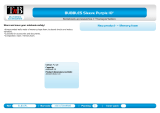 T'nB SLB10PL Datasheet
T'nB SLB10PL Datasheet
-
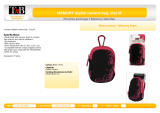 T'nB DCCM20PK Datasheet
T'nB DCCM20PK Datasheet
-
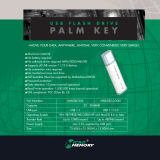 MicroMemory MMUSB2.0/2048 Datasheet
MicroMemory MMUSB2.0/2048 Datasheet
-
Approx APPHSBT01R Datasheet
-
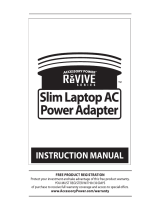 Accessory Power LAC-IB20V90W-SLIM_CE01 Owner's manual
Accessory Power LAC-IB20V90W-SLIM_CE01 Owner's manual
-
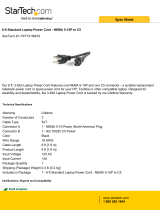 StarTech.com PXT101NB3S Datasheet
StarTech.com PXT101NB3S Datasheet
-
Venturer BravoWin S 10K Quick start guide
-
Venturer BravoWin S 10K Quick start guide
-
Kogan com KAL11L700PA User guide
-
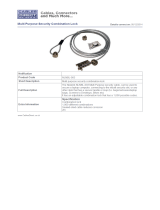 Cables Direct NLNBL-003 Datasheet
Cables Direct NLNBL-003 Datasheet


















































































